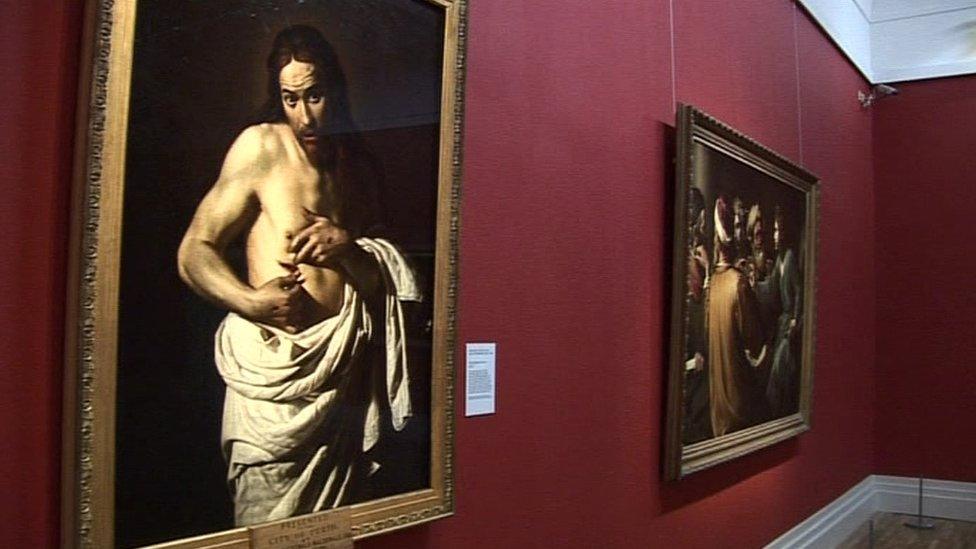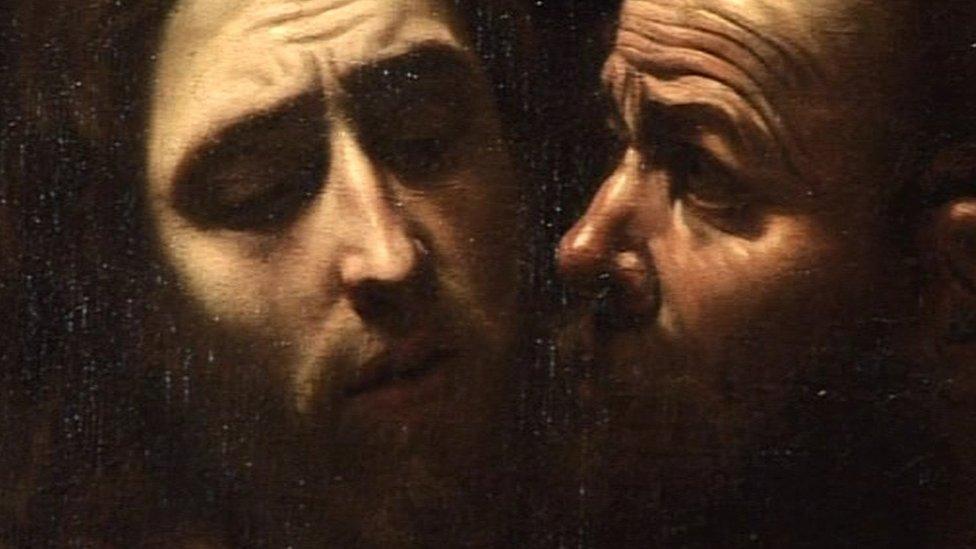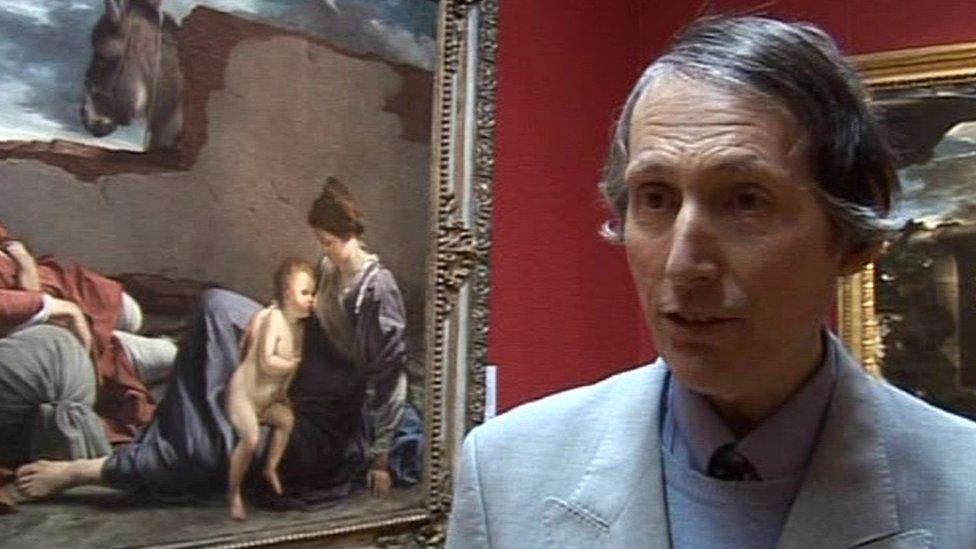Renaissance bad boy Caravaggio's Dublin exhibition
- Published

Caravaggio preferred to use ordinary people as models
The National Gallery of Ireland is currently hosting an exhibition called Beyond Caravaggio.
It features the work of the Italian artist and some of those he had an influence on.
There are four paintings by Caravaggio himself on show, including the The Taking of Christ, the whereabouts of which was unknown for 200 years.
It was only rediscovered in 1990 in the Jesuits' residence in Dublin.

The Taking of Christ was missing for 200 years
Caravaggio, who died at the young age of 39 in 1610, has an image of being a bit of a bad boy.
He was very different from other artists of the time in the way he used light and painted ordinary people as opposed to idealised versions.
'Gay icon'
"He broke all the rules", says Adrian Le Harivel from the National Gallery of Ireland.
"Instead of careful drawing and academic training, he worked from the model and painted straight onto the canvas, particularly using the dramatic effects of light and dark in order to make his paintings more dramatic."

Adrian Le Harivel says Caravaggio broke all the rules
The exhibition includes the work of 30 other artists from all over Europe influenced by Caravaggio, including Orazio Gentileschi's painting of the Holy Family's Rest on the Flight into Egypt.
Other artists featured follow Caravaggio's lead in painting tavern scenes, many of which are candle-lit, although none of Caravaggio's own works feature the light of a candle.
Nowadays, he is sometimes seen as a gay icon who lived an unconventional life, even by the standards of artists.
'Brawling'
This included, at one stage, being sentenced to death for murder by Pope Paul V.
"Caravaggio is really a three-dimensional character," says Mr Le Harivel, "He has police records for arrests for brawling and attacking other artists".
"Famously, there's the duel where he kills someone and has to flee Rome in 1606. So, he's a very lively character and that certainly comes over in his portraits."
The exhibition of paintings from Britain and Ireland is a collaboration between the National Gallery in London, and the National Galleries of Ireland and Scotland.

The artist made dramatic use of light and dark
The better-known entrance to the National Gallery on Dublin's Merrion Street, beside the back of the Dáil (Irish parliament), is temporarily closed.
So, those wanting to see Caravaggio's work have to take the entrance near the back of Trinity College.
You can catch the exhibition in Dublin until 14 May.